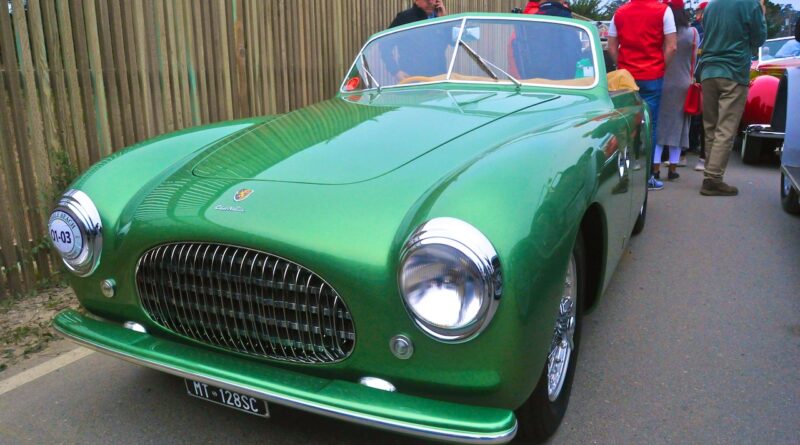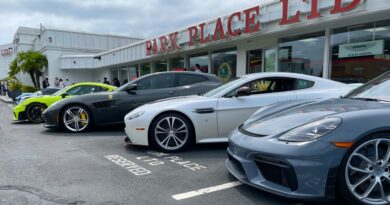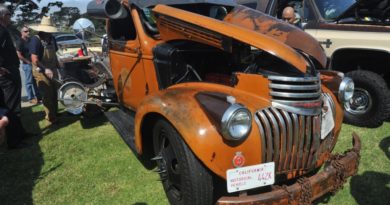The Slow Death of Coachbuilding
Before WWII, hiring a coachbuilder to design your luxury car’s cabin and exterior was the only way to finish the purchase of your vehicle. Either the carmaker hired coachbuilders on their own, or you decided who would finish designing how your car would look. After the war, that changed completely, as carmakers were deciding they should have their own design houses and build their own bodies. The transition ultimately spelled doom for body designers who couldn’t or wouldn’t try to adapt. Here are a few examples of those who clung to coachbuilding through the late forties into the fifties.
Designer Jacques Saoutchik built car bodies from 1906 until shortly before his death in 1955 at age 75. The examples shown here are but two of the up to 100 cars a year his shops would create. He was one of the most sought after and prolific designers of his time. Saoutchik immigrated to Paris from Ukraine at age 19 as a skilled cabinetmaker with ambitions of becoming an artist of automobiles. He developed a reputation as a daring designer who, in contrast to competitors like Franay, and Figoni & Falashi, was not afraid to take risks in developing designs that were at once exquisite and flamboyant.
An exhaustive number of volumes have been written about Saoutchik, his cars and his business. No two car bodies were the same. Twelve of his cars were recognized in a class all their own during the 2012 edition of the Pebble Beach Concours d’Elegance. Chassis from such prestigious builders as Mercedes, Hispano-Suiza, Bugatti, Delage, Cadillac, Talbot-Lago, Delahaye and Pegaso were represented as examples of his coachbuilding prowess.
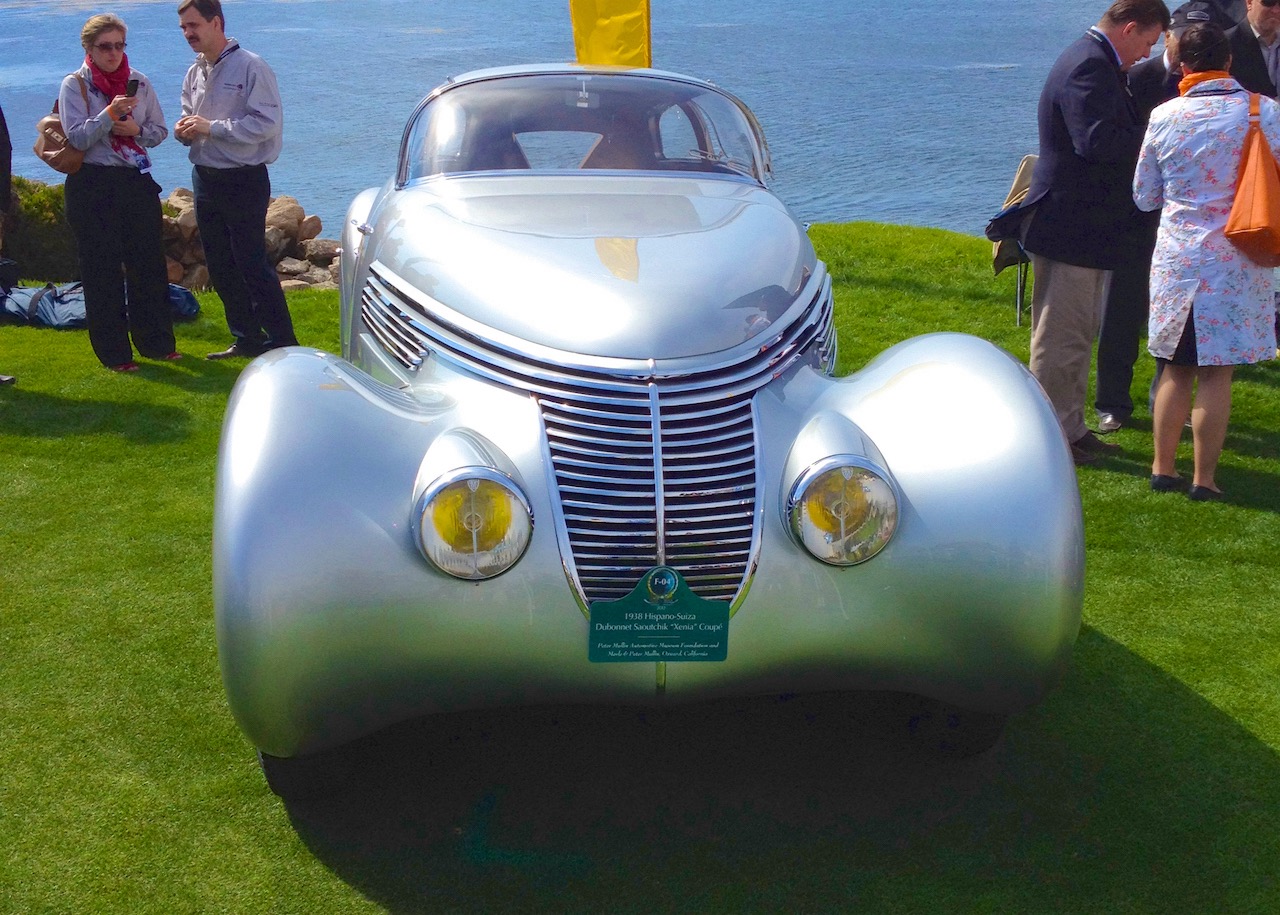
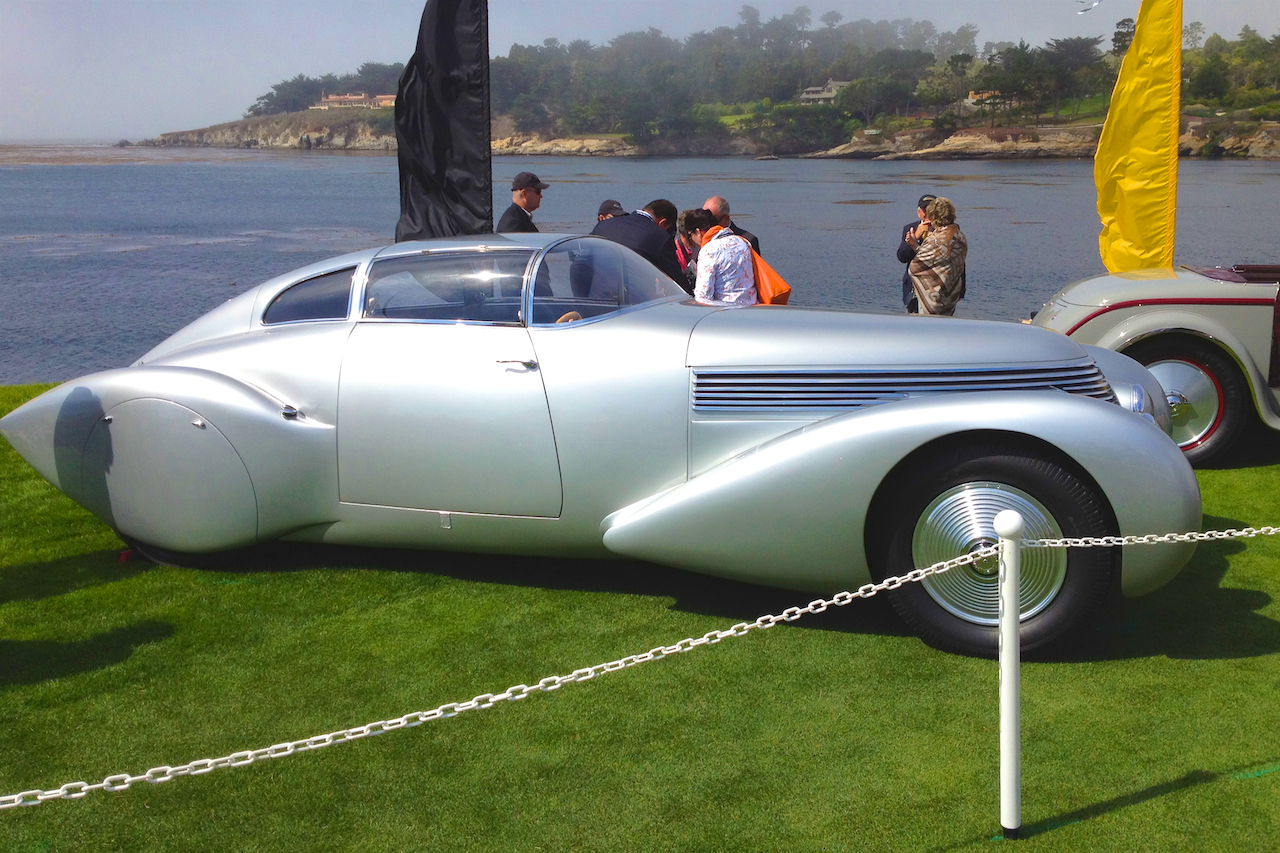
The 1938 Hispano-Suiza “Xenia” Coupe at the 2012 Pebble Beach Concours d’Elegance
Cost was never a Saoutchik consideration, and functionality took a back seat in importance to contour, texture and use of materials. Engine cooling, for example, was an afterthought for him, as such a consideration would detract from his goals as an artist. In his early years, he made a name by inventing (and patenting) the transformable body style. With folding and removable parts it enabled cars to be reconfigured from completely enclosed limos to sporty open tops. Later on, he would develop the technique of accenting and repeating body lines with chrome and brightwork to the point of obsession. Philippe Charbonneaux, an industrial designer once commented, “Visual magic is what he was after.”
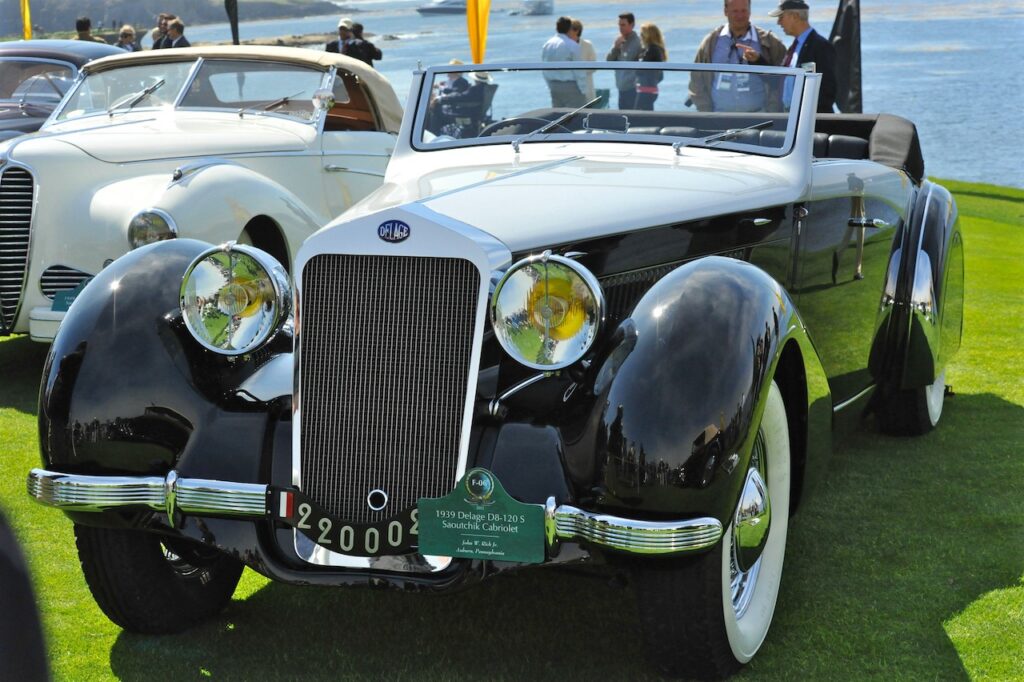
By the late 1920’s all the world’s elite wanted a car designed by Saoutchik, including kings and emperors. The king of Siam reportedly sent a telegram stating, “Need three cars. One for opera, one for touring, one for wife. Do your best. Send bill.” The bill was $60,000 for a Rolls, a Mercedes and a Hispano-Suiza.
Saoutchik was also known as a perfectionist who could be arrogant and hard to deal with professionally, but to his adoring customers he could do no wrong. His cars were not always truly beautiful, as to him the challenge was often to simply push the boundaries of what was possible in automotive design.
The Hispano-Suiza coupe above was built as a tribute to Xenia, the first wife of French flying ace, Olympian, race car driver and inventor, Andre Dubonnet (heir to the famous French aperitif). Dubonnet provided the suspension engineering, aerodynamicist Jean Andreau penned the design, and Saoutchik bodied the car. It was, and is even today, a striking avant-garde design met with praise.
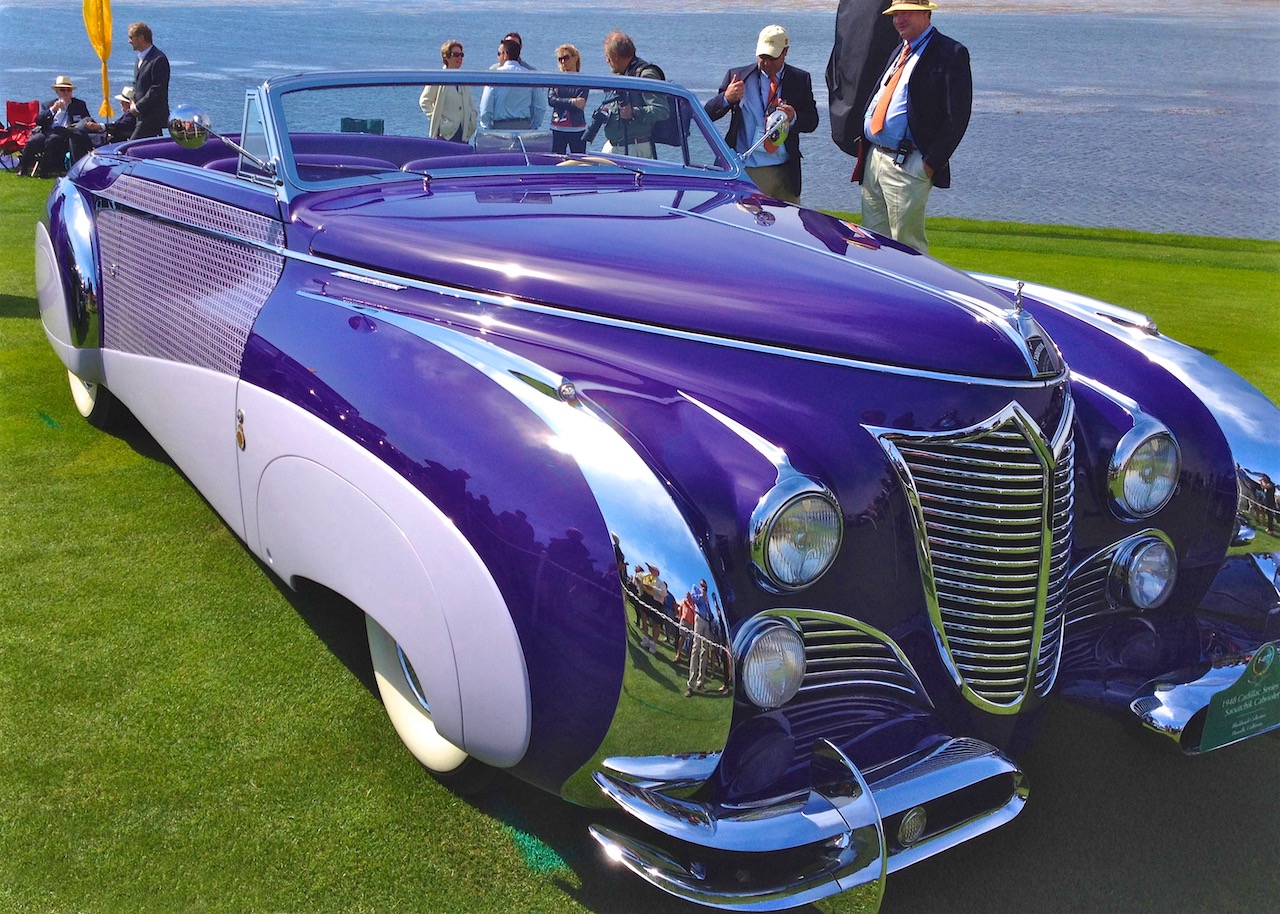
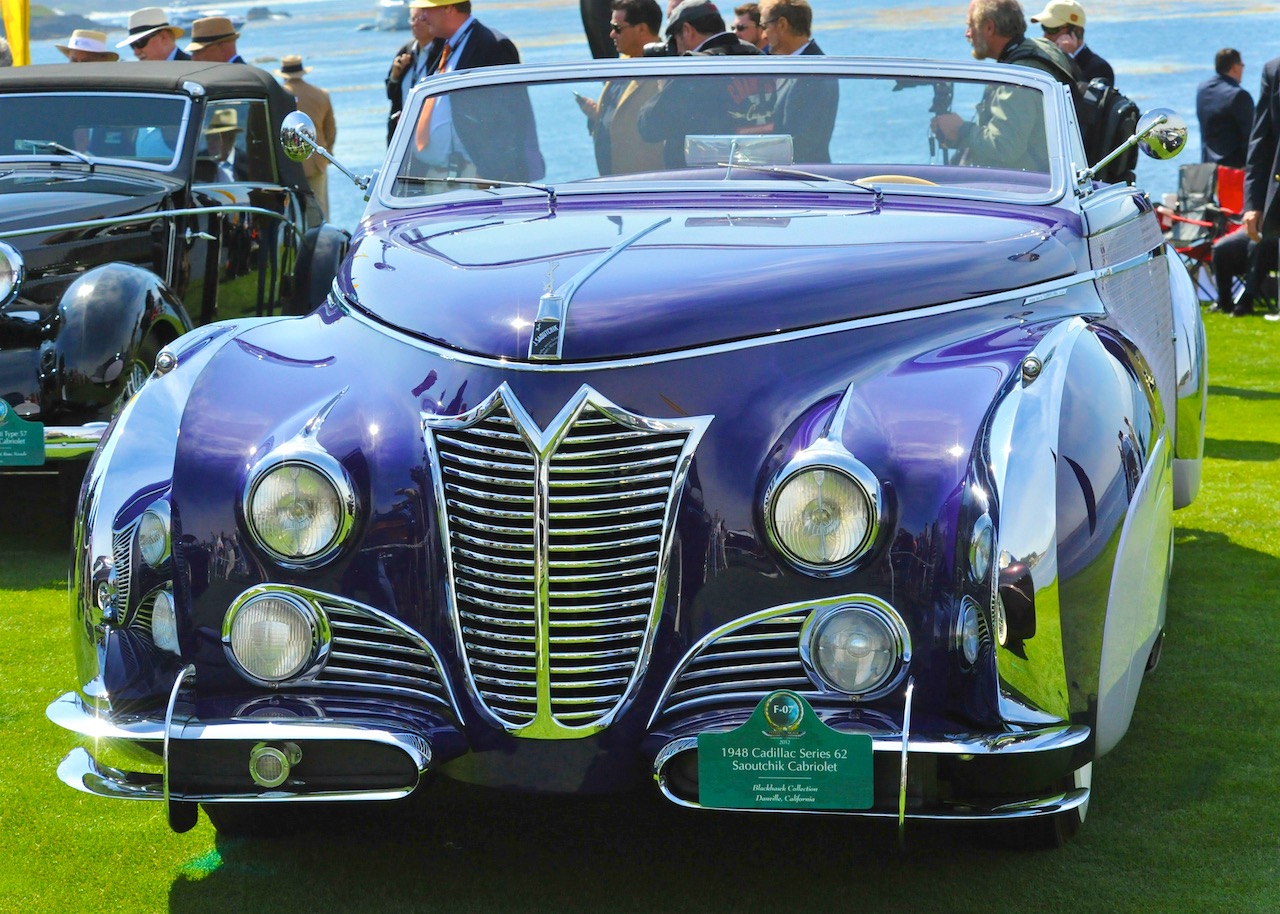
1948 Cadillac Series 62 Saoutchik Cabriolet at the Pebble Beach Concours d’Elegance
The Cadillac was built for New York City furrier Louis Ritter, who wanted a special Cadillac convertible. It was displayed at the 1949 Paris Auto Salon, where it supposedly stole the show. It was subsequently shipped to Ritter who then drove it to Beverly Hills, CA and used it for several months before selling it to Harold McLean, a modest Santa Barbara businessman! His wife’s favorite colors were purple and lilac. It is one of two similarly bodied Cadillac 62s, and shows Saoutchik’s increasingly extravagant use of accents and details to gain attention for most of his later designs.
There were other successful designs such as the beautiful 1948 Talbot-Lago T26 that was also shown at Pebble Beach in 2012. In the end, however, Saoutchik was a victim of the post-war industry changes and his unwillingness to adapt his design perspective.
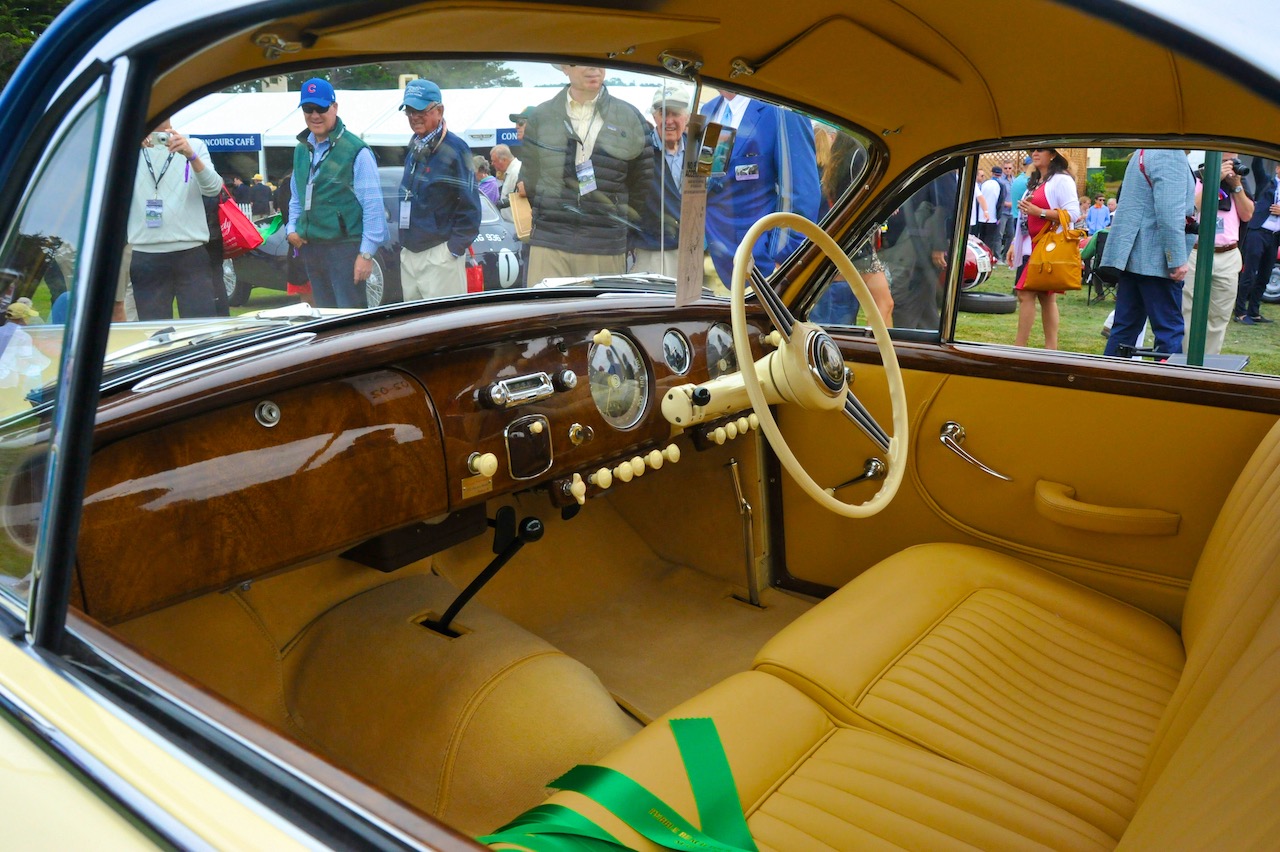
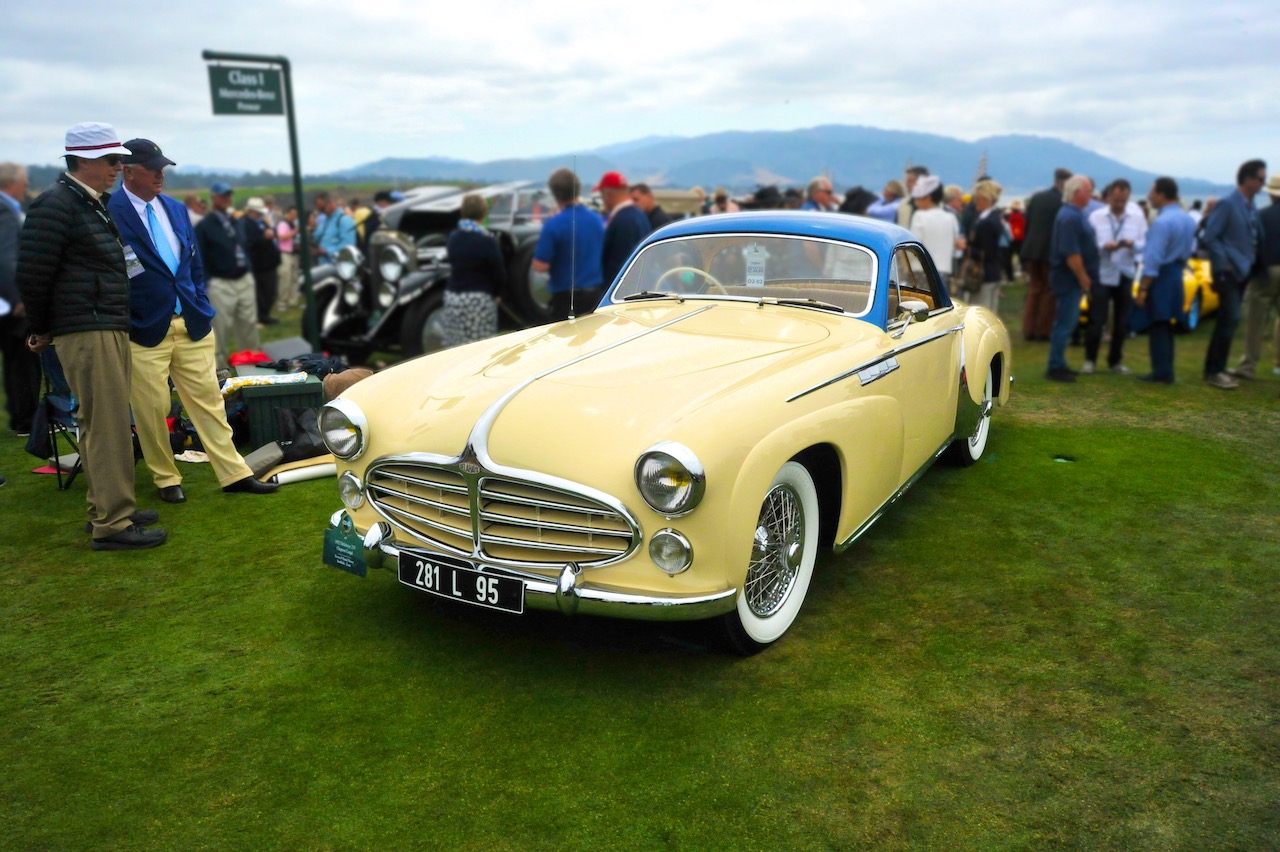
1952 Delahaye 235 Chapron Coupe at the 2017 Pebble Beach Concours d’Elegance with owner David Diciere. I love the way David coordinated his outfit with this wonderful car.
Speaking of the end of an era, the 1952 Delahaye 235 marked the beginning of the end for Delahaye. Unable to offer factory built bodies, Delahayes were still chassis-only cars sent to custom coachbuilders like Chapron, Figoni and Saoutchik. The price for a Chapron was a fantastic 3.8 million francs. While Delahaye made a belated effort to provide a factory-bodied car, it was still 2.7 million francs and remained based on 1930s technology. Like Saoutchik, the end was near for Delahaye. It was absorbed by Hotchkiss in June, 1954 and Delahaye production ended soon after.
Henri Chapron created his atelier shop in 1919 in the Paris suburb of Levallois-Perret. He was always considered at the vanguard of the profession, but unlike most of his competitors, in the 1950s Chapron was able to switch his resources to building production conversions. The Citroen DS was the basis for his unique convertible (in all, 389 were built) known as the “Decapotable.” Chapron continued the practice of converting French-built production cars from Citroen and Peugeot until his death in 1978 at the age of 92. Under his wife’s direction, the company managed to continue operations for another seven years. Notable conversions included the Presidential models based upon the Citroen DS and SM built for the French governments of Charles de Gaulle and Georges Pompidou.
Some of these conversions are highly collectable today, including the 1975 Citroen SM Mylord cabriolet that sold in 2014 for nearly 550,000 Euros.
The Delahaye Chapron above is the first of three 235 coupes bodied by Chapron and shown at the 1952 Paris Auto Show. It boasts a 150 HP 6-cyl engine linked to a Cotel electromagnetic gearbox. While its early history is unknown, it was part of the Seydoux Collection before being purchased by Claude Gueveler, a member of the Delahaye Club, and was also later registered in Monaco.
Many other coachbuilders, particularly in Italy, began emphasizing their industrial design prowess and capitalized on that ability for many years. Carrozzeria like Bertone, Boano, Ghia, Pininfarina, Touring Superleggera, Vignale, and Zagato worked their magic with major and independent car manufacturers; anyone with a buck to spend on design. Some continue today as important industrial designers. No doubt the mystic and sex appeal of Italian design helped them survive.
A portent of things to come came in 1949 with the debut of the evolutionary Cisitalia 202. The 1949 Cisitalia 202 Coupe penned by Pinin Farina was a seminal work of automobile styling, so much so it was recognized in 1950 by the Museum of Modern Art as one of eight automobiles highlighting the aesthetics of automotive design.
The Cisitalia was viewed as a breakthrough design utilizing what was called the single envelope body, that is, a single shell of bodywork enclosing engine, interior and wheels as one. It’s a concept we accept today without thinking, but back then it was a sensational example of thinking outside the box.
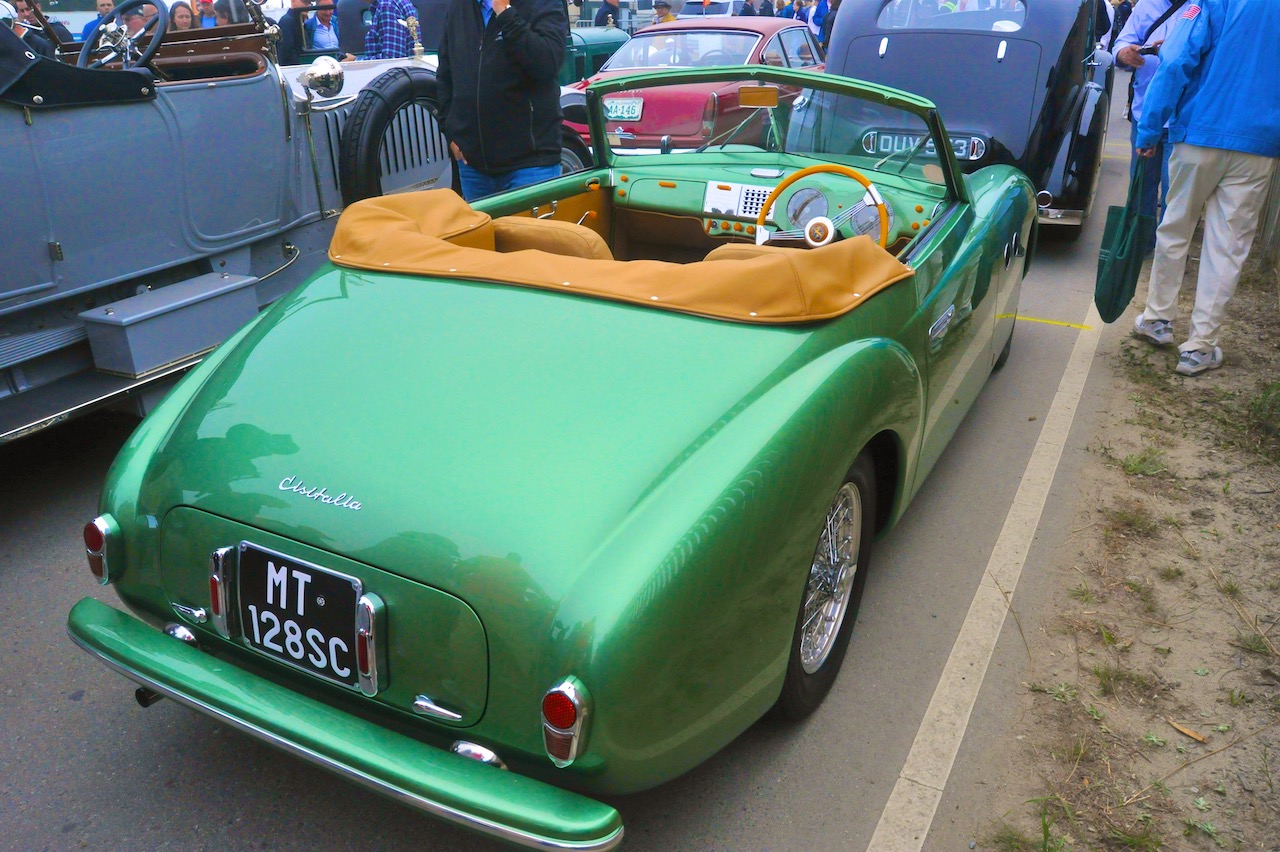
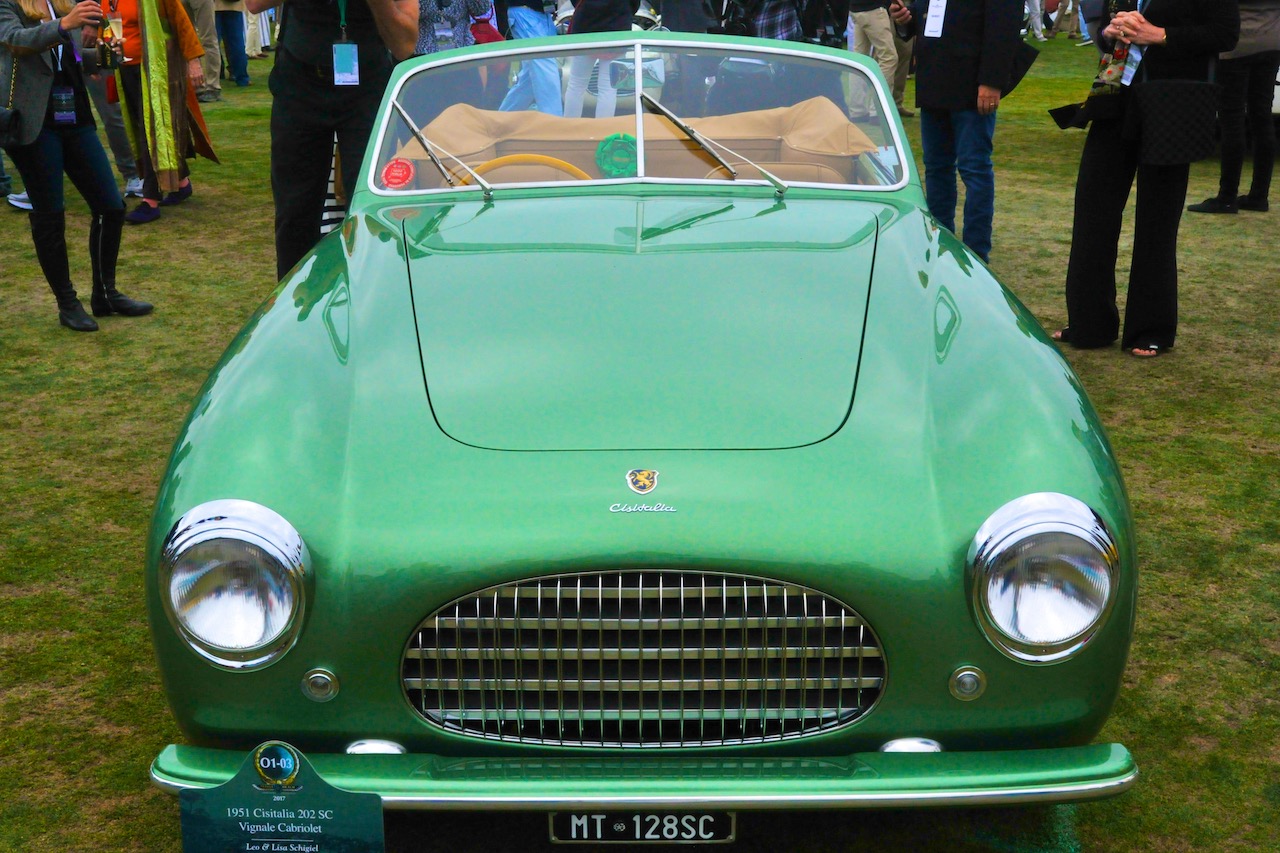
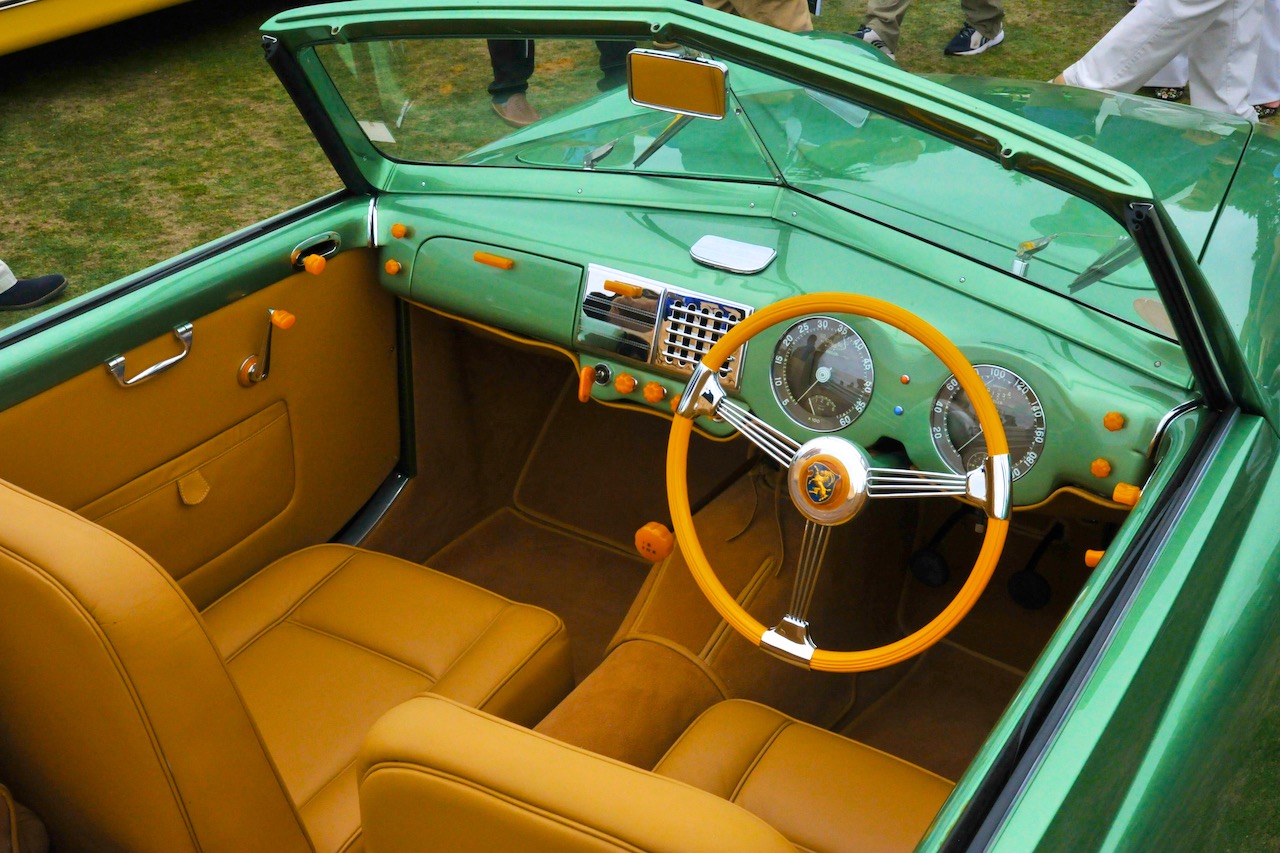
1951 Cisitalia 202 SC Vignale Cabriolet at the 2017 Pebble Beach Concours d’Elegance. This car is Vignale’s convertible version of the Pininfarina fastback design.
This Vignale-built cabriolet follows the Pinin Farina form but lacks the same purity of finish simply because it does not have the fastback roof and cove vent details of the coupe. Those design features were copied again by the ’54 Alfa Romeo 1900 CSS, and doubtless lifted by Ford for the 1965 Mustang Fastback. The similarities between the Alfa and the Mustang are actually quite striking. At the same time, the 202 incorporates American details such as slotted, chromed grillwork and the fender portholes of the 1949 Buick Roadmaster.
This particular Cisitalia was built as one of six for Uruguayan dealer Emilio Fontana. The first owner subsequently sold the car to a US Air Force pilot in 1959, who kept the car until 1970. In 1986, it was bought by an Italian who shipped it back to Italy for restoration. Current owner Leo Schigiel saw it at the Mille Miglia Museum in 2014 and bought it a year later.
Piero Dubio founded Cisitalia in 1946 and produced the first 202 Coupes in 1947. With its minimalist yet purposeful, motion- driven styling, the 202 has been revered as a masterpiece of automotive design ever since. It also created an avenue for Pininfarina to survive by providing a path to design every Ferrari built for some 50 years, thereby creating a marque worthy of design consideration by others.

